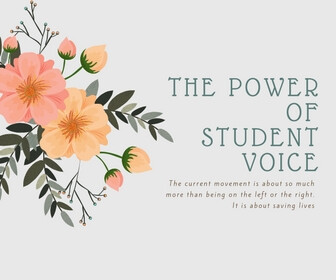In Classroom Instruction That Works, 2nd edition, I write that when students enter your classroom at the beginning of the term there are two questions in their minds – “Can I do the work?” and “Will I be accepted here?” Their potential for success depends on them being able to answer “yes” to both of these questions. The language you use plays a big role in this. Here are some tips to help you in creating that positive learning environment for all students.
Tip 1: Build Rules Collaboratively
Always build classroom rules and procedures collaboratively and in the positive. I cringe when I visit classrooms and see “No Talking” as classroom rule #1. I suggest beginning by have a discussion with your students about how they learn best and then fashion your rules accordingly. If some students say they need a quiet area to work in at times, try a sign like, “Quiet Area, Brains at Work.” Also, if your classroom rule says “We don’t use cellphones in class.” the students shouldn’t see their teacher texting someone. Classroom rules should apply to everyone equally.
Tip 2: Tell Students You Believe in Them
Continually let your students know you believe in them. Saying “I know you can get this” rather than “You need to try harder” for example is an indication of your belief in them rather than an accusatory statement. Saying, “We talked about this yesterday. Did you forget?” is laying blame on the student. Instead a statement like, “You had this so well yesterday. I know you can get it today.” reminds the student of their past success. These are both subtle differences in language that can make a big difference in your students’ perception of your faith in their as learners. Think about Carol Dweck’s work on fixed and growth mindsets.
Tip 3: Examine Your Mindset
Speaking of mindsets, examine your own mindset. Do you believe in your own ability to learn and grow? Do you believe it is your obligation as a teacher to model learning and growing? Look at this graphic on an educator’s mindset and do a little self-reflection.
Tip 4: Make the Learning Benefit the Learner
Use your language to show students that they are learning for their own benefit, not yours. I can’t begin to count the number of times I have heard teachers begin an instruction or direction by saying, “What I need you to do for me….” This tells the student they are doing a task for the benefit and approval of the teacher. Just eliminate that part of the direction and begin with, “The first thing you need to do to learn this is….” The learning has to be for the benefit of the learner, not the teacher.
Tip 5: Share Honest Feedback
Be honest in your feedback. Good feedback tells the learner what they did correctly, where they may have missed the mark, and what specifically they need to do next. I remember being a 7th grade student art class. I have a number of talents, but drawing isn’t one of them. The teacher wrote, “nice job” on my sketch of an orange. I knew very well that my smudged mess of an orange wasn’t a nice job. It wasn’t even a decent representation of any fruit known to man. I would have benefited by her telling me one thing I could do to make it better. Maybe something like “We are learning about perspective. Try adding a shadow behind your sketch.” Her “nice job” told me little about how to improve. Knowing I received undeserved praise lessens the impact or praise when it is truly earned.
Tip 6: Be Objective
When dealing with a student conflict or behavioral issue, be objective rather than accusatory. For example, rather than say, “Why did you take Jacob’s pencil?” begin by asking what happened. Asking why a student did something will likely provoke a defensive comment. “I took is pencil because he called me a name.” This leads to the inevitable “No I didn’t, yes you did” cycle. Asking what happened will allow both students to tell their story, moderated by the teacher. Give prompts like, “How did you think that make Jacob feel?” – “How else do you think you might have reacted?” – “What might you try next time?”
Students are more likely to learn in a safe learning environment – one in which they feel valued and protected. As you build and cultivate this environment, also be sure to use research-based instructional strategies to be sure students clearly know what they are expected to know, understand, and be able to demonstrate. Building a strong learning environment and using research-proven instructional strategies makes it more likely that students are able to answer “yes” to the questions, “Can I do the work?” and “Will I be accepted here?”







